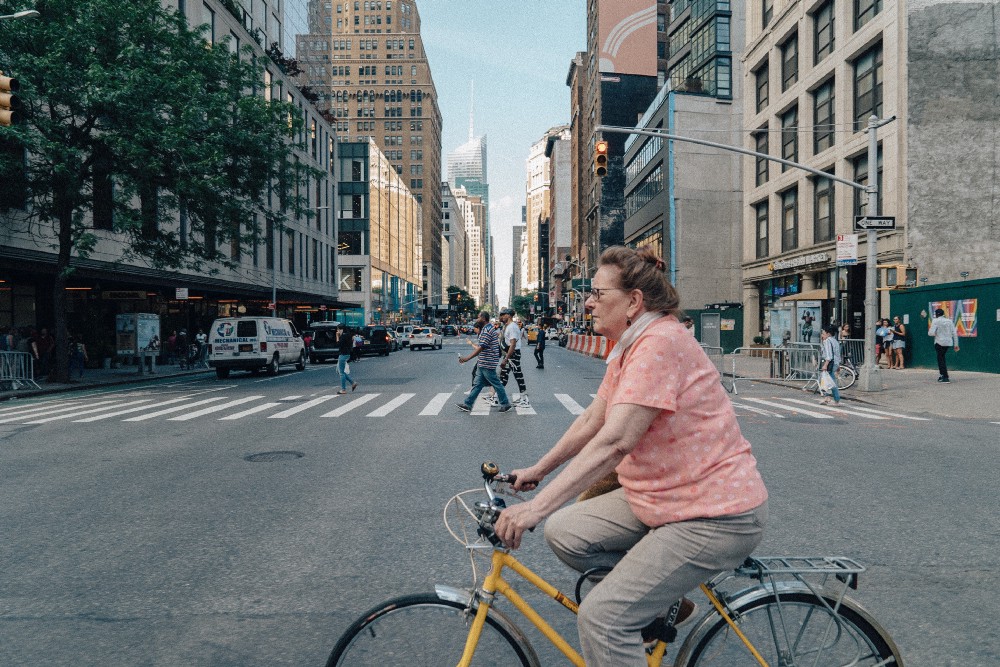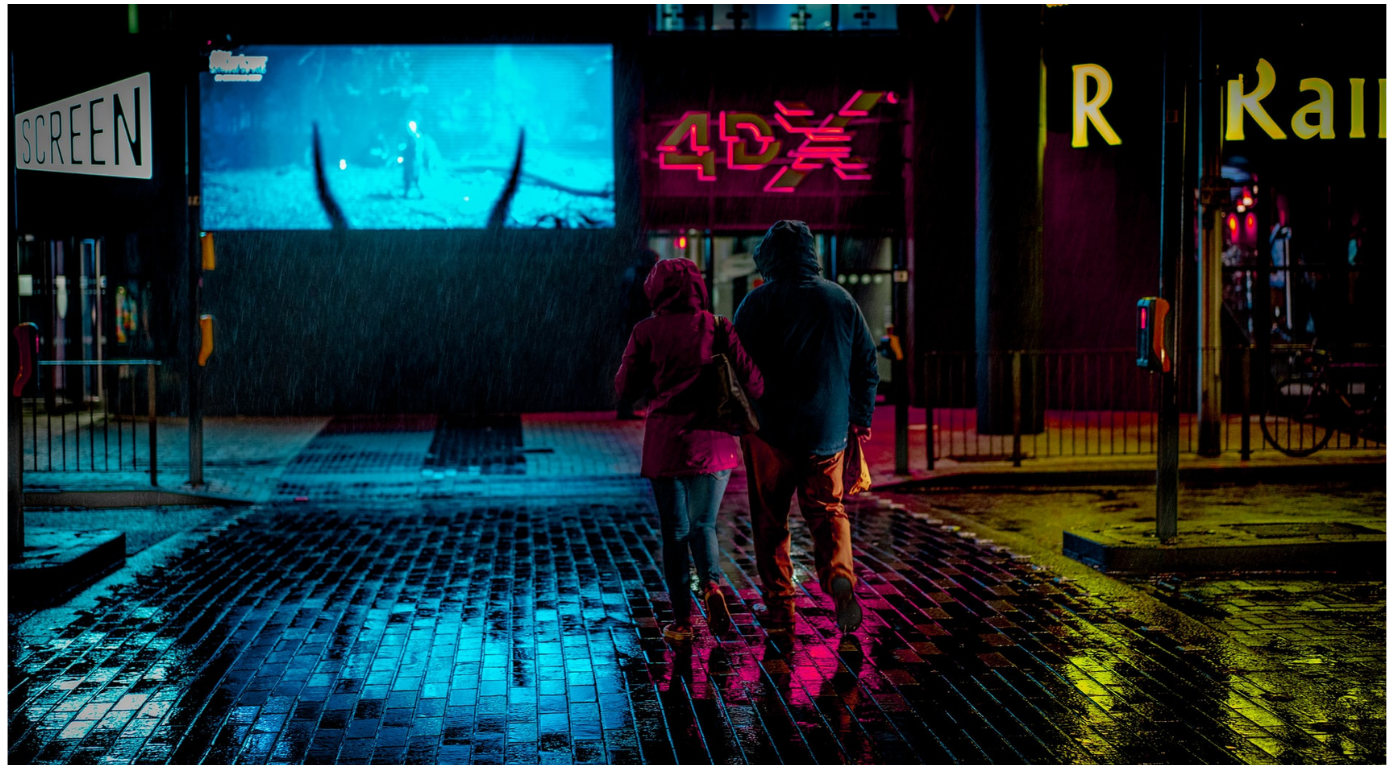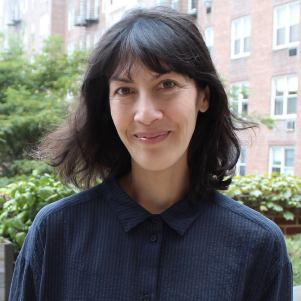An interview with Tara Pham, Co-founder & CEO of Numina
Cities are products of design. In the last century, the urban planning and design fields often prioritized the mobility of cars over people, and efficiency over the community (think: Robert Moses and the post-war demolition of New York City neighborhoods in favor of highways). To address this legacy of a top-down gaze and framework, we need street-level, people-centered perspectives that inform how our cities are designed. This is where human-centered design, equity design, and ethical technologies can be harnessed to champion urbanism in service of people — not cars, politicians, or planners. An example of how street-level data is shaking up the power dynamics of urban planning is Numina — a standalone sensing platform to measure all kinds of curb-level activity anonymously and in aggregate. Working with city agencies, urban planners, and mobility companies, Numina provides dynamic volume counts, paths, and traffic behaviors that disrupts traditionally costly, cumbersome ways cities collect data. I spoke with co-founder and CEO, Tara Pham, on her approach to applying agile, street-level insights towards equity, access, and inclusion in the context of the current public health crisis and the Black Lives Matter movement.
Adriana Valdez Young: As an urbanist, I’ve come to see streets as rivers, like passageways for people and goods that fluctuate over time.
Tara Pham: I like that analogy. Water over long amounts of time can carve out rocks. So much of city traffic has been forced to conform to concrete. I like to measure the things that don’t move in lanes and get snapshots of what movement patterns are actually like. We need to do this to truly understand how humans use our cities. In general, people just use space differently than cities imagine. There’s a lot of mid-block crossing and bottlenecks or prolonged wait times for street crossings. We’re able to observe nuanced things that our clients didn’t anticipate, such as capturing the wait time and transfer behaviors at bus stops. Planning studies can take many years, but Numina accelerates this to provide immediate data and ongoing insights. There’s a lot of urban tech platforms that focus on macro-level traffic management and large-scale modeling. But we like the street scale, which allows us to understand and respond to that idea of streets as living systems, more like rivers.
AVY: Through lockdown and various stages of reopening, what kinds of changes have you seen in how New Yorkers are using the street?
TP: Right now, the big shift because of the COVID-19 crisis has been slow streets. Cities are closing off streets to cars to provide more physically-distanced space for people. This is exciting because people no longer have to drive or travel far to get to big parks. Open space can be right outside your door. Cities and people are learning that there’s more than one way to use the street — it’s not just for parking and moving cars.
City managers and metropolitan planning offices seem to think that this is just an adjustment for the summer of 2020, but I think these are interventions that will persist for 18–24 months and maybe beyond. It’s unfortunate that it’s because of a pandemic, but this is a moment to reimagine our streets. Lately, we’ve been onboarding new cities to Numina very quickly. Sometimes the evaluation of urban planning and design changes can be a bit of an aftermath, but this moment is so big. Departments of health, parks, urban planning, and more are increasingly conscious that we need to measure and evaluate these changes in how people use public space from the get-go.
AVY: What has surprised you the most about our streets during this pandemic?
TP: There have been a couple of aha moments for our city clients. Typical street surveys are done at increments of 15 minutes for a couple of times a day using a clicker and clipboard. But when you have constant measurement, like with Numina, it far exceeds what people expect. Some traffic patterns remain the same for essential workers, but we’re seeing steep declines of foot traffic in areas like Times Square. And we’re still trying to solve with data science why there are certain pedestrian peaks in this new pattern of life and new reality.
On the Brooklyn Waterfront Greenway, a 26-mile route connecting Brooklyn in a lot of unique ways, we’ve been counting all non-motorized transit happening on foot and bicycles. Week over week, we’re seeing 100 more bikes added to the daily traffic flow. There’s also been a dip at 6 pm, whereas that used to be a peak commuting time. In NYC as a whole, we’re seeing a big spike in bike ridership. Overall, we’re partnering with cities to more quickly measure traffic and evaluate tactical urbanism projects before deciding on a permanent change. Our hope is to enable more A/B testing of the built environment. If cities don’t measure it, planners and policymakers can’t just anecdotally infer the impact using “anect-data.”
AVY: In what ways does measuring how people use streets to increase safety?
TP: Bike accidents are not accidents, they are by design, just like police violence. It’s not an anomaly or a blip, it’s a system working as intended. Our original intention when we built our first sensor was simply to make a more accurate bike and pedestrian sensor so that planners could better address multi-modal traffic safety. Within broader health, safety, and neighbor hood development initiatives, we’ve created a sensor ensures privacy by design. One of the problems with data collection in cities is that it can be expensive, invasive and ultimately, inaccurate. For example, setting up a camera to record pedestrian flow presents a huge security problem. We’ve learned that street-level data can be collected but you don’t need to capture any personal data.
AVY: I loved your tweet encouraging founders and leaders to give their people time off to protest, grieve, and self-care. Why is it important for leaders to do this?
TP: As someone running a tech company that intervenes in public life, I need to ask myself what ways am I building an anti-racist company and product? Most of our focus is on transportation equity. Good multimodal options for different people, social capability, sense of self, transformation enables all of that. Our health. Mental, emotional, social heath. Transportation is just this interesting fulcrum. It can either enhance or counteract productivity in your life.
Urban planning is one of the most important tools of structural racism. Every city that I’ve visited or lived in has a Black, Brown, or predominantly immigrant neighborhood that has been completely razed for a highway or a monument that was really for the benefit of White people. This is a moment for each of us to think about what we can in our own ways. I run a small startup, but I’m seeing how everyone can do something. For example, bus unions saying we’re not going to transport arrested protestors. We’re all being forced to think about everything in our daily lives and what we can change. How can each of us individuals be a fulcrum of change to unseat previously reinforced structural racism?
At my company with a very small staff I don’t have the resources to make very grand gestures, but I make sure we integrate anti-racist values into our everyday life and I can do this at no prohibitive cost of my company. I’m starting by giving people personal time off and fully acknowledging what’s going on. For so long, companies have just continued to go about their business, but we need to take pauses. We need to ask ourselves how each of us contributes to structural racism.
AVY: How do you apply an equity lens to your work?
TP: In urban planning, you can constantly or actively make decisions that counteract or contribute to racism. The field we work in has immense scaleable impact and it is top down. Often, a small group of people makes decisions for millions of people that impacts generations to come. In urban planning in particular, there’s been this zeitgeist about equity and I love that this is so important, but I still sit in meetings where I’m the only person who’s not a White male and they’re making decisions about communities that look completely different from them about things like where to put bus lines or where to place this bike station. In these moments, no one remembers to apply their equity lens. It’s not that urban planners never do it, but because we don’t have this diversity in the field we’re lacking the perspectives and personal experiences that would make this part of the culture and system of planning.
AVY: How can the ways we collect and apply data help shift the culture of urban planning to be more equity-centered?
TP: The same data can tell many different stories. We don’t collect data for data’s sake so that it can be contorted to any end goal. We start our work with cities by asking them to state their values and we use this to hold the whole team accountable every step of the process. For example, if the goal is to increase transit access for high Black population neighborhoods, we will collect the data and design for those outcomes and we figure out the fair and right metrics to determine even where to measure. If you look at the rollout of Citibike in NYC, it is not a coincidence that they started the program in certain neighborhoods where they perceived an affluent customer base and therefore, higher adaptation. Then the data from the rollout doesn’t actually inform how to scale the program equitably and city-wide. Is that right? Not really.
AVY: What’s one thing you’re learning about right now that’s giving you life?
TP: The thing I’m trying to learn more about is reparations and the different communities that we owe shit to. It is unquestionably Black people in America. I’m in a fellowship with a number of advocates for indigenous peoples. I’m interested in how we bring our super urbanized, mechanized, capitalized world back to more natural holistic roots and planet Earth.

Photo: Matthew LeJune








